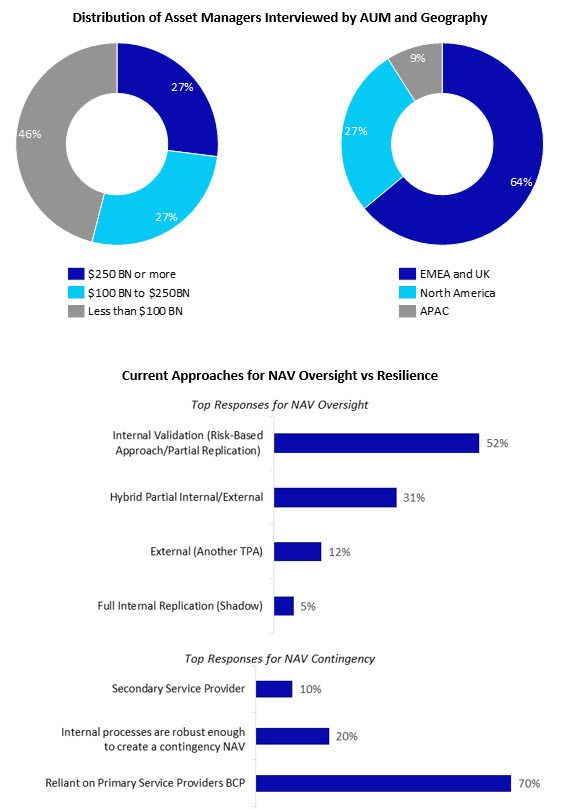During the first half of this year, Celent conducted in-depth conversations with global asset managers about their back office NAV oversight and contingency as well as emerging technology tools to automate and facilitate these efforts. The push toward efficiency, broader use of automation, and cost reduction has driven many investment firms to rethink their partnership strategies and core value propositions. The trend for firms of all types has been an increasing reliance on outsourcing across the full value chain of investment firm activities. There is perhaps no function more commonly outsourced than NAV production, reflecting the need for this service and the demand for independence. Boards of directors and regulators especially emphasize the need to ensure that the NAV produced by third parties is correct. Firms also need to have a BCP plan to deliver an alternative (backup) NAV in the case of technology, business, operational, or other exogenous disruption events.

Based on these findings, Celent recommends a five-step approach to optimizing NAV contingency and oversight processes:
- Establish a clear risk/reward framework to guide investments and operational improvements.
- Increase automation of core oversight and validation functions to improve oversight staff productivity and process monitoring.
- Employ “watch the watcher” oversight tools as a catalyst to enhance, formalize, and standardize fragmented oversight activities, especially those that carry spreadsheet inefficiencies and risks.
- Pursue oversight solutions that can produce a backup/alternative NAV to leverage a shared infrastructure across both areas.
- Leverage performance data captured from the oversight and contingency processes to evaluate and improve service provider delivery on a continuous basis.






